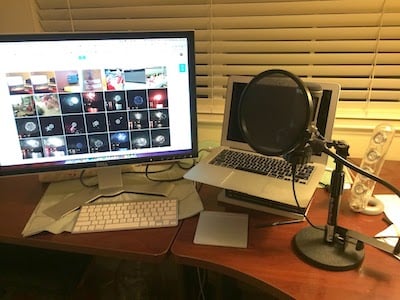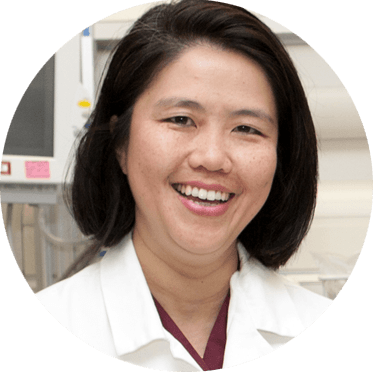In this inaugural post of the series “How I Work Smarter,” I wanted to share my thoughts and efforts towards working smarter and not always necessarily harder. I have been the Editor-in-Chief of ALIEM since 2009 where I first was only managing myself and now I working with an all-star team of very motivated and capable medical educators in EM. Three moving parts rapidly became thirty moving parts with thirty different deadlines. Here are my responses to the series questions.
-
 Michelle Lin, MD
Michelle Lin, MD - Location: San Francisco Bay Area, CA
- Current job: Editor in Chief of ALiEM and UCSF-San Francisco General Hospital Associate Professor of Emergency Medicine
- One word that best describes how you work: Creatively
- Current mobile device: iPhone 5
- Current computer: MacBook Air
What’s your office workspace setup like?
I am big fan of the second monitor set-up at home and at the hospital office. I pair it with a lightweight, portable laptop so that I can be portable, since I am often working in various coffee shops for inspiration. Ergonomically, this set-up works best for me with a separate keyboard and trackpad. I use the Apple brand ones, which connect via bluetooth (I have no financial disclosure). I also have a USB Audio-Technica 2020 microphone to record podcasts (thanks EM:RAP!).
What’s your best time-saving tip in the office or home?
Think about how many times your write certain phrases or text over and over on different websites and email programs. I love text expanders. I use aText ($5) on my Mac, although I recently learned that you might be able to do this for free in the most recent Mac OS (System Preferences > Keyboard >Text). I have keystrokes for my various emails, work and non-work email signatures, phone numbers, and some stock phrases. For instance, typing “eee” inserts my work email automatically. These few saved seconds save lots of time in the long run.
What’s your best time-saving tip regarding email management?
I am an advocate of David Allen’s Getting Things Done philosophy and “Inbox Zero” philosophy by Merlin Mann, although I honestly haven’t been able to achieve it yet. Currently, I have 21 messages still in my inbox! Nonetheless, I have rigged my Gmail so that I can quickly sort my inbox immediately into actionable items of:
- To Do Today
- To Do Soon
- Scheduled for Meeting
- Awaiting Reply
- Non-Urgent Tasks
I used this tutorial to create “multiple inboxes” through smart uses of labels. Plus it’s important to learn keyboard shortcuts in Gmail to quickly move messages around.

What’s your best time-saving tip in the ED?
I created my Paucis Verbis cards to maintain a repository of topics that I commonly need to look up (e.g. vasopressor doses, PECARN for pediatric blunt head trauma) or commonly use to teach students/residents on shift. These on-demand resources save me tons of time.
ED charting: Macros or no macros?
I think I am in the minority when it comes to using macros. I find that they are high-risk for documentation error, depending on what macros you create. The few macros that I do use are:
- ED Boarding Patients: I state that I am only watching over a patient who has already been admitted to an inpatient service and await a bed.
- Negative FAST (and E-FAST) ultrasound
- Negative gallbladder ultrasound
- Negative renal ultrasound
- Negative DVT ultrasound
What’s the best advice you’ve ever received about work, life, or being efficient?
Before taking on a new project, think about whether it is aligned with your long-term professional goals. If so, commit to a finite amount of time whereupon then you can re-new your commitment, if time allows. When I first started out as an attending, I volunteered to help and lead projects, which had no end in sight with annual recurring responsibilities. People were surprised when I wanted to transition to other projects.
Is there anything else you’d like to add that might be interesting to readers?
I am a visual brainstormer. When planning out projects and organizing my thoughts, I like to draw. I find that analog tools foster creativity. So one of my favorite purchases is a large whiteboard for my home office. Instead of spending hundreds of dollars on a fancy, large whiteboard, I bought two white showerboard panels (can get from Home Depot or Lowe’s), which are made of melamine. It’s a little bit harder to erase the pen marks, but you can’t beat $15 (instead of $150-250). Read more in this Primer Magazine post.
Who would you love for us to track down to answer these same questions?
- Salim Rezaie
- Esther Choo
- Victoria Brazil
- Damian Roland
Author information
The post I am Michelle Lin, ALiEM Editor in Chief: How I Work Smarter appeared first on ALiEM.



